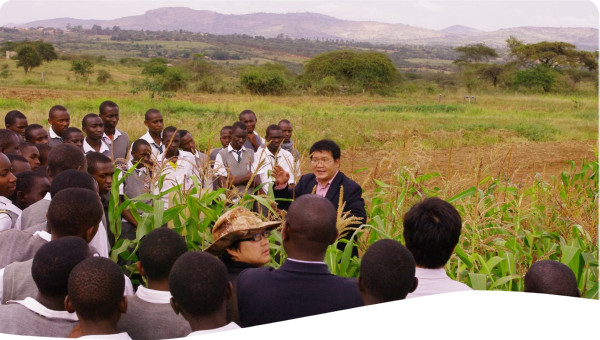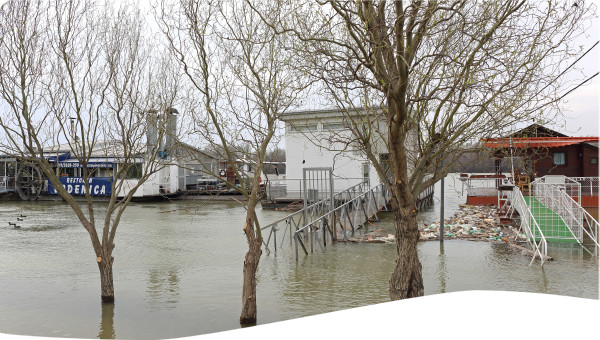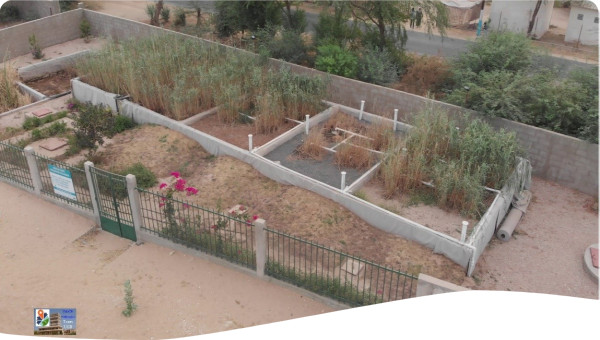National governments, local authorities (Tool B1.02), basin organisations (Tool B3.04), businesses (Tool C5.05), donors and financial institutions, including development banks (Tool D2.04; Tool D2.05) are potential stakeholders in developing NbS projects. For a concrete NbS project to yield the outcomes desired, its design and verification should be based on a robust framework represented by the following criteria and corresponding indicators (IUCN, 2020):
Criterion 1. NbS effectively address societal challenges: ensuring that a NbS is designed as a response to a challenge which was formulated during a participatory decision-making process, including community members. The following indicators to assess this are used:
- The most pressing societal challenges are prioritised
- The challenges are clearly understood and documented
- Tangible and substantive benefits to human well-being are delivered.
Criterion 2. Design of NbS is informed by scale: recognising the complexity and uncertainty coming from biophysical and geographical perspectives, as well as economic and political systems. The following indicators support the assessment:
- NbS recognise and respond to interlinkages between the economy, society, and ecosystems
- NbS seeks synergies across sectors
- NbS incorporates risk analysis (Tool C1.01).
Criterion 3. NbS result in a net gain to biodiversity and ecosystem integrity: avoiding undermining the integrity of an ecosystem. The following indicators shall demonstrate successful implementation:
- NbS address drivers of degradation and loss
- Biodiversity conservation outcomes are identified, benchmarked, and assesses
- Potential negative externalities arising from the NbS are periodically assessed
- Opportunities to enhance ecosystem integrity are incorporated into the NbS.
Criterion 4. NbS are economically viable: considering economic viability of the project (Tool D1.01). The following indicators may be applied:
- Direct and indirect benefits and costs are taken into account, together with identifying who pay and benefits
- A cost-effectiveness study is conducted
- Available alternative solutions are estimated
- Various resourcing options, such as private and public sector, as well as voluntary commitments are considered.
Criterion 5. NbS are based on inclusive, transparent, and empowering governance processes (Tool B1.05): NbS align with regulatory provisions, and mechanisms that engage affected stakeholders are activated. The following indicators will demonstrate that:
- Feedback mechanisms are available
- Participation is based on mutual respect and equality regardless of gender, age or social status (Tool B5.03)
- Stakeholders affected are identified
- Decision-making process responds to the rights of all participating stakeholders
- Mechanisms to enable joint decision-making of the stakeholders in the affected jurisdictions are established.
Criterion 6. NbS equitably balance trade-offs between achievement of their primary goals and the continued provision of multiple benefits: all the stakeholders should be consulted on how the trade-offs should be addressed. The following indicators may be used:
- Costs and benefits of associated trade-offs are acknowledged
- The rights and access to land and resources of different stakeholders are respected
- Periodic revisions of mutually-agreed trade-offs limits are conducted.
Criterion 7. NbS are managed adaptively, based on evidence: ensuring adaptive management to address uncertainty and harness ecosystem resilience. The following indicators are used:
- NbS strategy is used as a basis for M&E
- A M&E plan is developed
- Iterative learning is applied to enable adaptive management.
Criterion 8. NbS are sustainable and mainstreamed within an appropriate jurisdictional context: ensuring that NbS interventions aim at long-term sustainability aligning with sectoral, national and other policy frameworks. The following indicators help monitor that:
- NbS design, implementation and lessons learnt are shared
- NbS informs facilitating policy and regulation frameworks
- NbS contributes to national and global targets for human well-being, climate change, biodiversity and human rights (Tool A2.05).
 Tool -
Tool -







